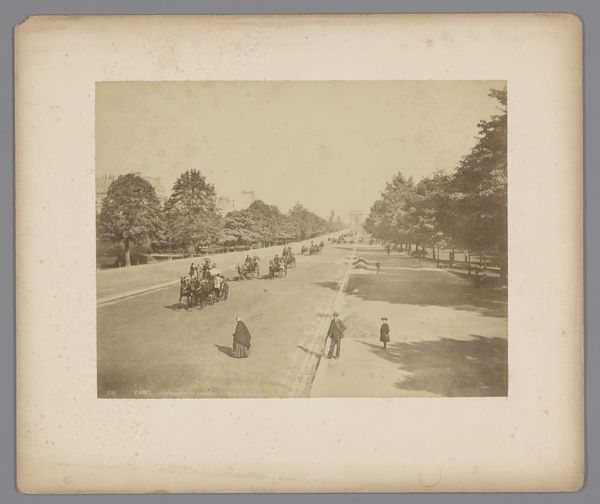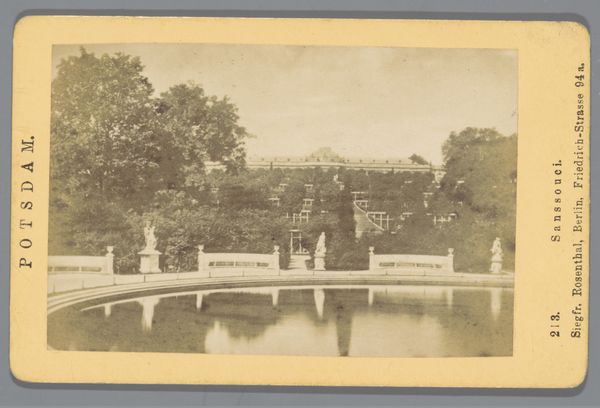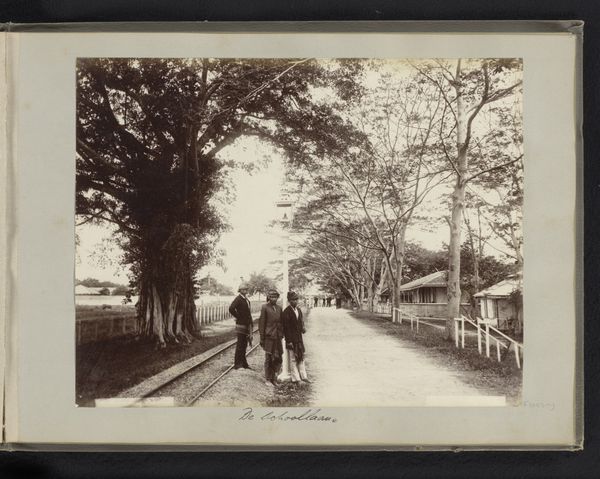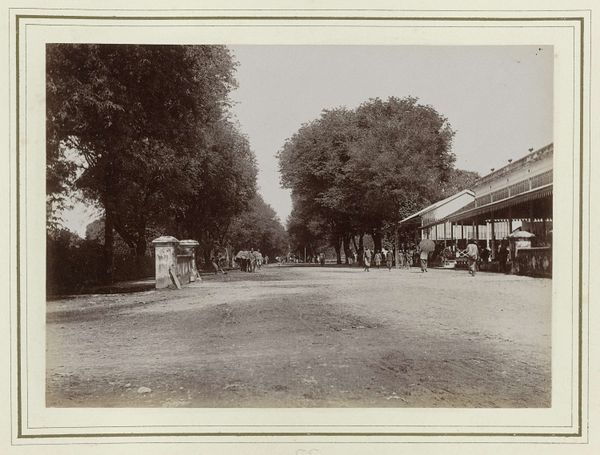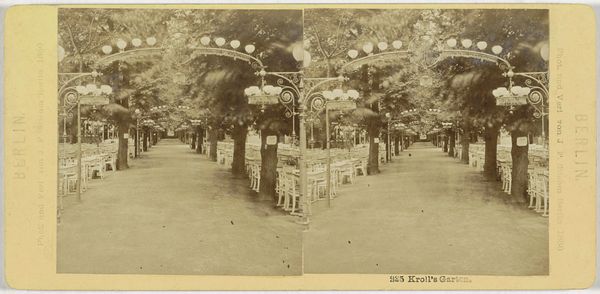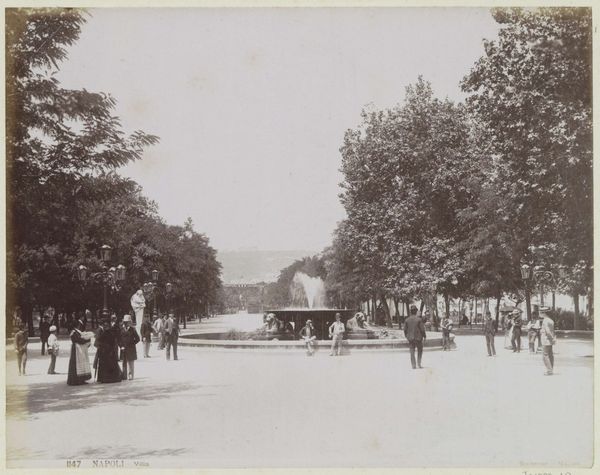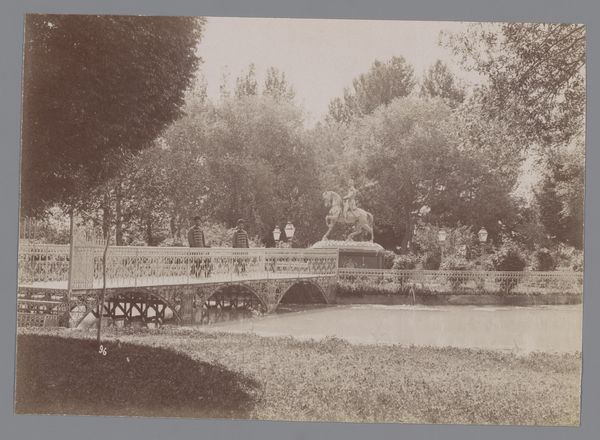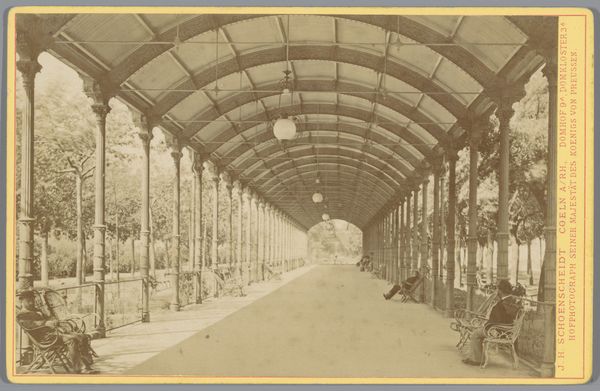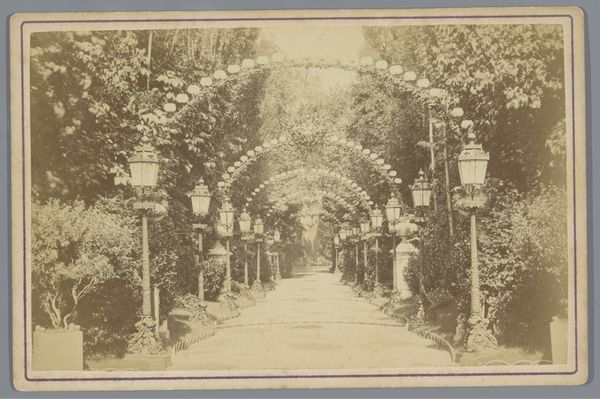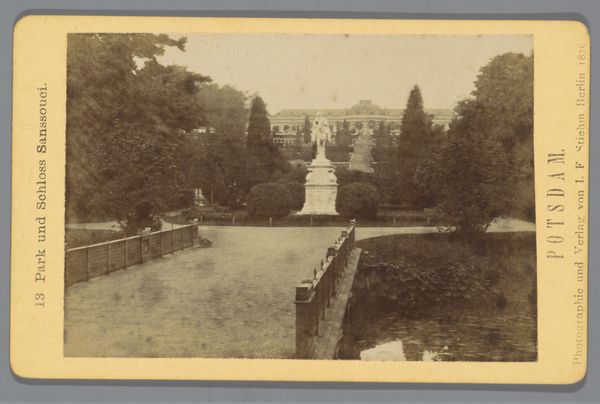
Vijfhonderd stenen lantaarns langs een weg in een park in Shiba, Tokyo, Japan before 1903
0:00
0:00
kusakabekimbei
Rijksmuseum
albumen-print, photography, albumen-print
#
albumen-print
#
asian-art
#
landscape
#
archive photography
#
photography
#
road
#
albumen-print
Dimensions: height 218 mm, width 270 mm
Copyright: Rijks Museum: Open Domain
Curator: This is "Vijfhonderd stenen lantaarns langs een weg in een park in Shiba, Tokyo, Japan" – a photograph captured before 1903 by Kusakabe Kimbei. Editor: It has such a dreamy, ethereal quality, despite its realism. The tones are soft, almost sepia-like. The rows of lanterns create this strong horizontal pull, balanced by the organic shapes of the trees. Curator: Exactly. The albumen print process, with its chemical baths and layering, was crucial in achieving that specific tone and depth. It's fascinating how much the final image relied on those meticulous, repetitive darkroom procedures, especially the controlled use of light to bring forth the image. Editor: The lanterns, rendered in stone, intrigue me. Their form echoes traditional Japanese architecture; a miniature version of temples or shrines lining the road. It structures a very human space. Curator: Indeed. This scene isn't just capturing a place; it is documenting the materials of the lamps and their probable origins, revealing a landscape shaped by considerable physical labor and transport logistics that supported both the lamps and, of course, the spiritual aspects of these sites in Shiba. This albumen print, purchased and likely mass-produced for the Western market, would have carried a certain exoticism, but at the expense of this knowledge of its materiality. Editor: Though somewhat faded over time, one can observe this balance of meticulous detail with atmospheric vagueness, it provides depth. Curator: It is precisely these material transformations that reveal layers of labor and global exchange in creating not only the artwork but also the constructed ideas of Japan presented for mass consumption. Editor: Yes, viewing "Vijfhonderd stenen lantaarns..." reminds us that looking closely at any piece, from any point of view, yields more interesting angles. Curator: For me, analyzing photographic prints always returns me to thinking about labor; its connection to capital and the manufacturing of ideas of otherness.
Comments
No comments
Be the first to comment and join the conversation on the ultimate creative platform.
